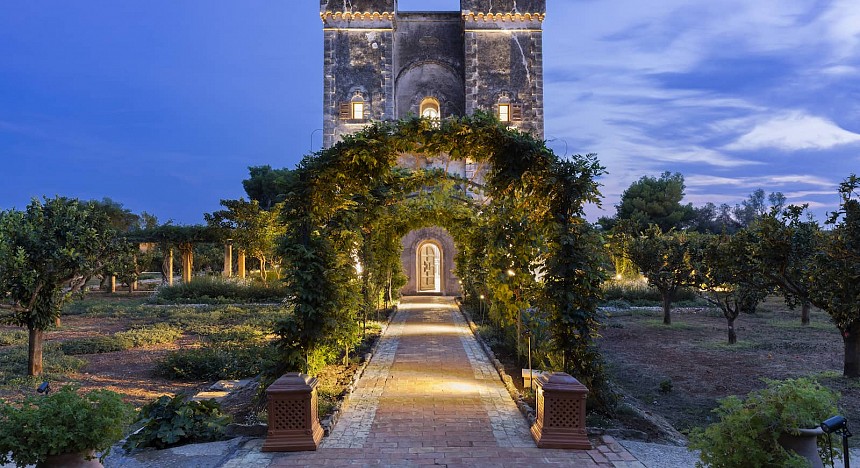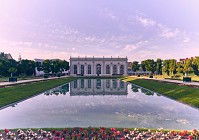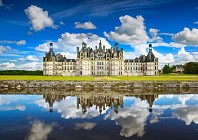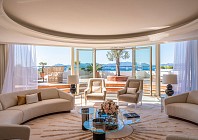The shiny super-yachts gently undulate in the Cannes harbour as we step onto our private launch. Fleeting glimpses of La Croisette fill my peripheral vision as we are zipped away to our hidden sanctuary. Within 10 minutes we arrive at Île Sainte-Marguerite – a tiny island with a big history. Bordered by crystalline waters, this natural haven of rocky inlets, wild beaches, and dense woodland is the largest of the Lérins Islands – a pocket-sized archipelago made up of four islands. Considering its proximity to the bustling Promenade de la Croisette, the car-free island feels somehow removed from it all. Seeking refuge from the mainland, artists and photographers such as Picasso and Lee Miller were just some of the famous visitors who revelled in its unspoilt beauty. So enchanted was Francis Picabia by the island’s extraordinary flora, fauna, and light, that he captured its rugged coastline in his painting L’île Sainte-Marguerite. Natural beauty aside, the myth surrounding the island’s most enigmatic inhabitant has always lured the crowds. It is here that the legend of the Man in the Iron Mask originated. The mysterious prisoner whose identity remains unknown is thought to have been King Louis XIV’s half-brother, imprisoned in a cell of the Fort Royal for 11 years.


There are no hotels on Île Sainte-Marguerite. We are the privileged guests of the only residence here – a three-and-a-half-acre private walled estate known as Le Grand Jardin. This three-and-a-half-acre sanctuary nestled into the south side of the island dates to the 12th century, with previous owners including the 15th-century Duke of Guise and Louis XIV, the Sun King. Available on a private rental basis, the property is ideal for those seeking exclusivity and a reconnection with nature. The fully-staffed residence boasts 12 bedrooms across seven separate buildings: the Governor’s House, three cottages, a guest house, and the old fortress tower. Woodland-scented zephyrs carry the aromas of the 14,000 sqm botanical park that surrounds the property.


Passionate staff regale us with local myths, mysteries, and truths – a storied history that permeates the property and is brought to life with an undercurrent of sustainability. We stroll across landscaped walkways that have been soil mapped to ensure that trees that have dominated the island for centuries are replanted. Cypresses, palm, olive, and fruit trees lead us to the estate’s botanical gardens, fragrant with roses, geraniums, and irises. It is in these very gardens that Napoleon is said to have grazed his horses, while elsewhere on the island cannonballs were fired at hostile ships. Legend has it that the turreted watchtower at the heart of the estate is where he spent two blissful nights – the same bedroom which I will occupy for the duration of my stay.

Spread over two floors, the lower half acts as an entertainment space which can be set-up according to guests’ preferences: for example, a playroom for young children. A helical staircase in the historical tower leads to the main bedroom where a sumptuous bed takes centre stage. Preserving the authenticity of the building, the room retains its circular shape and wood-panelled walls. A layer of modernity comes from the clean-lined interiors accented by white and grey marble, a neutral beige colour palette, and teak wood floors. Small arched doors lead to two expansive walk-in closets, a loo, and a separate bathroom with a grand rain shower. The in-vogue nature of these rooms juxtaposed with the history of the building is a glimpse into just how wonderfully layered this property is. From the two terraces in the room my view spans the azure waters of the Mediterranean, peeking out from behind the dense forest to the sweet-smelling citrus trees, and natural pools of the botanical garden dotted with ancient stone statues.

Embracing the island’s slower pace of life, I head to the in-house spa where a skilled therapist kneads away the exhaustion of my travel. While I am tempted to stay and experience the hammam and sauna, the picturesque sunset lures me back outside. Attentive staff members offer bubbles to accompany the sunset and soon the majesty of the tower is even more evident under the moonlight. A heavy emphasis is placed on gastronomy at Le Grand Jardin, where the head chef is a protégé of Joël Robuchon. In true Riviera style, meals are served al fresco next to the pool. An air of unpretentious luxury surrounds us as we tuck into giant succulent grilled prawns while the chef live cooks a deliciously cheesy risotto. Echoing the mantra of sustainability, the organic salads and herbs all come from the on-site chef’s garden. Dessert is decadently French, topped with hints of vanilla and basil, and complimented by an aromatic mint tea.


As the first of the morning light streams into my room, I am awakened by the song of cicadas. Stepping onto a cushy foot pillow – an extravagance I didn’t even know existed – I follow the sound out onto the terrace. Beyond the lush green garden, I spot white sailboats bobbing on the paradisiacal Mediterranean Sea – an idyllic backdrop to my morning coffee. Feeling restorative, I join the instructor-led yoga session next to the pool. Even the most strenuous of asanas flow easily with the postcard-worthy view.

Breakfast is a long and luxurious affair where everything from fresh fruit to flaky croissants, baked cheesy eggs, and homemade crêpes are on the menu. We head to the boat for a swim in the nearby waters, eager to discover British artist Jason deCaires Taylor’s underwater sculpture garden, featuring Easter Island-like heads of local members of the community. Lunch is a chance to discover Sainte-Marguerite’s neighbouring island, Île Saint-Honorat – home to the Lérins Abbey where Cistercian monks still live today. If I had the luxury of time, I would have loved an oenological visit to the Abbey where the monks hand-cultivate their vineyard as they have done since the Middle Ages. Instead, we head to La Tonnelle, a seaside restaurant with beautiful views of the Bay of Cannes and a delicious Provençal menu. Before heading back to the villa, we grab a drink in northern Sainte-Marguerite at one of the most talked-about dining spots on the Côte d’Azur– La Guérite. An institution, it has seduced diners with its authenticity, festiveness, and Mediterranean dishes since 1902. Celebrity sightings are commonplace here, with Elton John a dinner guest just the week before.

The next morning, I wake when it is still dark to hike around the surrounding forest and catch the sunrise. The sun makes its way through the orange sky as I take in the Aleppo pine and eucalyptus forest, the cove picnic areas, and the wild secluded beaches. From where I stand, with some of the most beautiful views I’ve ever seen splayed out before me, it is clear that Île Sainte-Marguerite truly is one of the last protected jewels of the Côte d’Azur.











